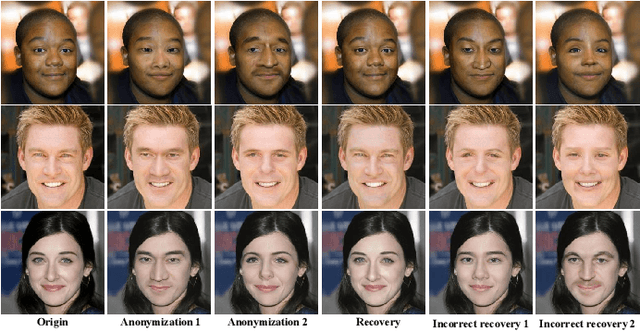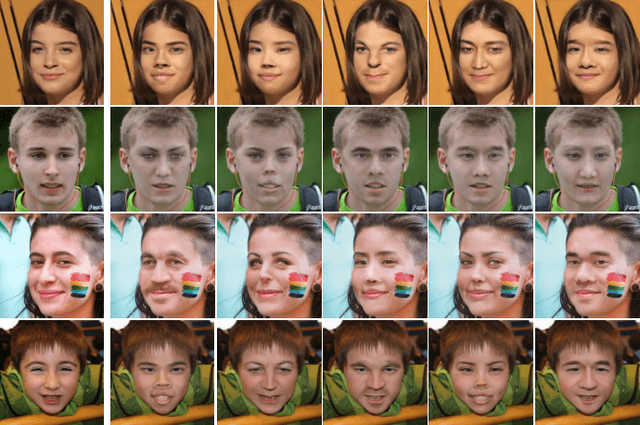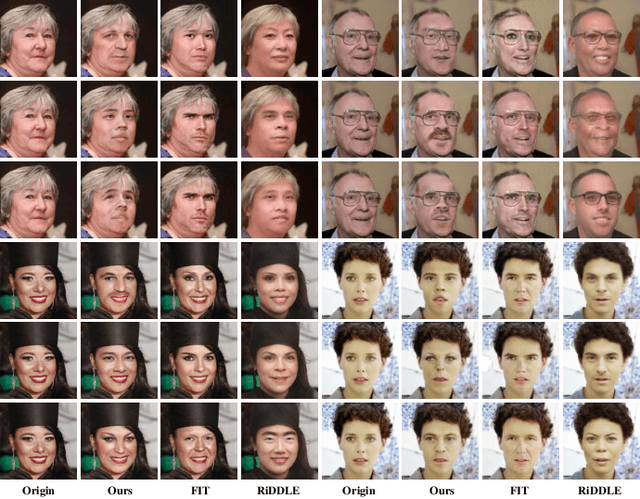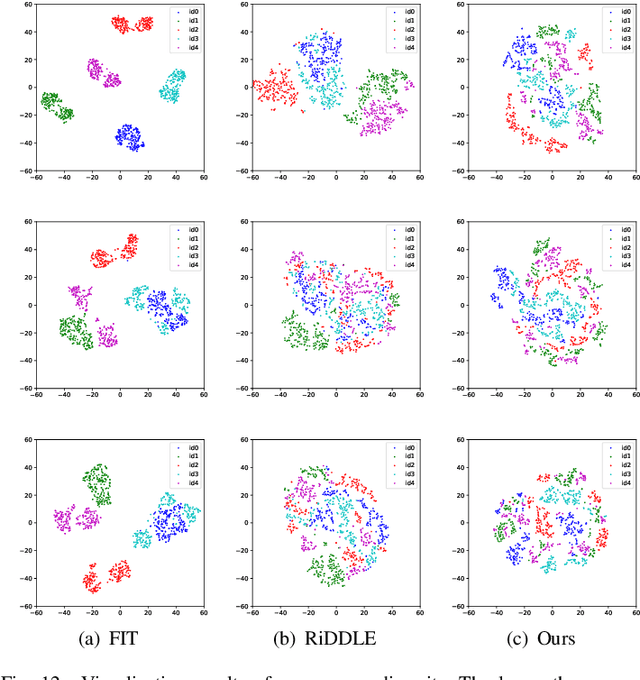HFORD: High-Fidelity and Occlusion-Robust De-identification for Face Privacy Protection
Paper and Code
Nov 15, 2023



With the popularity of smart devices and the development of computer vision technology, concerns about face privacy protection are growing. The face de-identification technique is a practical way to solve the identity protection problem. The existing facial de-identification methods have revealed several problems, including the impact on the realism of anonymized results when faced with occlusions and the inability to maintain identity-irrelevant details in anonymized results. We present a High-Fidelity and Occlusion-Robust De-identification (HFORD) method to deal with these issues. This approach can disentangle identities and attributes while preserving image-specific details such as background, facial features (e.g., wrinkles), and lighting, even in occluded scenes. To disentangle the latent codes in the GAN inversion space, we introduce an Identity Disentanglement Module (IDM). This module selects the latent codes that are closely related to the identity. It further separates the latent codes into identity-related codes and attribute-related codes, enabling the network to preserve attributes while only modifying the identity. To ensure the preservation of image details and enhance the network's robustness to occlusions, we propose an Attribute Retention Module (ARM). This module adaptively preserves identity-irrelevant details and facial occlusions and blends them into the generated results in a modulated manner. Extensive experiments show that our method has higher quality, better detail fidelity, and stronger occlusion robustness than other face de-identification methods.
 Add to Chrome
Add to Chrome Add to Firefox
Add to Firefox Add to Edge
Add to Edge